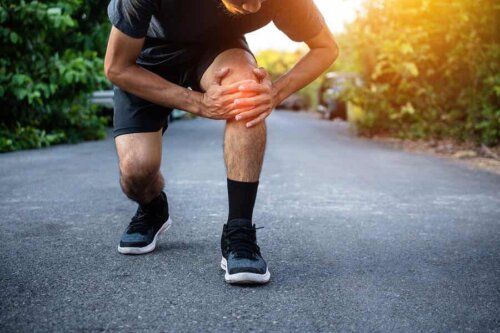Description of a Baker's Cyst and Its Characteristics


Written and verified by the doctor Leonardo Biolatto
A Baker’s cyst is an abnormal accumulation of synovial fluid. Adams described it first in 1840, but Baker published an extensive document about it. That’s where the name came from.
There isn’t enough data to establish the exact prevalence of this disease. This is because the percentage varies depending on the diagnostic technique. Thus, estimates indicate that Baker’s cyst afflicts a segment of the population ranging from 5 to 38%.
Some studies indicate that Baker’s cyst is present in 26% of people between the ages of 31 and 50 years. It also appears in 53% of adults between 51 and 90 years of age. However, there’s no consensus on the validity of these figures.
Baker’s cyst

A Baker’s or popliteal cyst is an abnormal accumulation of joint/synovial fluid in the back of the knee. The area it appears is commonly referred to as your “hamstring.” It’s a lump that leads to discomfort.
A faulty knee produces more synovial fluid and we refer to it as “joint effusion.” It’s precisely this excess fluid accumulation that leads to the formation of a Baker’s cyst.
The joint fluid lubricates the knee. It begins to accumulate because the synovial membrane, a layer that lines the joint, weakens. The cyst forms behind the knee when this happens. This area is technically known as the “popliteal fossa.”
Causes
As noted above, a faulty knee produces excess synovial fluid. It can happen at any age, so it’s important to always pay attention to joint problems.
Baker’s cyst usually appears as a result of trauma in younger people. It’s usually after an injury to the knee ligaments or a meniscal tear. Only a few cases are due to joint wear and tear.
The most frequent causes of this condition in older people are inflammatory or degenerative processes. It’s mainly due to diseases such as rheumatoid arthritis or osteoarthritis.
Do you know Knee Sprain: Causes, Symptoms and Recommendations
Detecting a Baker’s cyst

A Baker’s cyst is usually asymptomatic and simply manifests as a bulge in the back of the knee. It’s soft to the touch as if filled with water. It may rupture in some cases and cause pain, swelling, and bruising though.
Some people experience stiffness or difficulty flexing the knee. Pain may be frequent and lead to some difficulty walking when the cyst compresses veins or nerves. More incisive pain may also occur after exercise.
It’s important to consult a doctor if you have a lump on the back of your knee because it’s either a Baker’s cyst, a blood clot, or a deep vein thrombosis.
Find out: 5 tips and exercises for strong knees
Things to keep in mind about a Baker’s cyst
A physician can detect this kind of cyst through a simple physical examination. They may do a transillumination test, which involves shining a light through the lump. This will reveal a fluid-filled mass.
In any case, a Baker’s cyst isn’t considered a serious condition and therefore doesn’t usually require treatment. Instead, the usual approach is to correct the cause, be it an injury or an underlying disease.
It can cause damage to nearby blood vessels or nerves. Thus, doctors reserve surgery for cases with really bothersome symptoms. However, these surgeries are rare because there’s a high probability that the cyst will reappear after surgery.
Cysts of this type don’t cause long-term damage and usually have intermittent symptoms that come and go. It’s rare for them to lead to limitations and those who have them usually get better over time.
All cited sources were thoroughly reviewed by our team to ensure their quality, reliability, currency, and validity. The bibliography of this article was considered reliable and of academic or scientific accuracy.
- Rojas, C. I. L. I. A. (2011). Estudio del líquido sinovial. Guías procedimientos en Reumatol, 41-47.
- Chávez-López, M. A., Naredo, E., Acebes-Cachafeiro, J. C., de Miguel, E., Cabero, F., Sánchez-Pernaute, O., … & Aceves-Ávila, F. J. (2007). Agudeza diagnóstica del examen físico de rodilla en la artritis reumatoide: estudio clínico y sonogr‡ fico del derrame articular y quiste de Baker. Reumatología Clínica, 3(3), 98-100.
- De Miguel, E., Cobo, T., & Martín-Mola, E. (2004). Quiste de Baker: prevalencia y enfermedades asociadas. Rev Esp Reumatol, 31(10), 538-542.
This text is provided for informational purposes only and does not replace consultation with a professional. If in doubt, consult your specialist.








